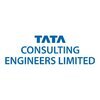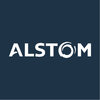Filter interviews by
Al-Hani Construction & Trading Co. Interview Questions and Answers
Al-Hani Construction & Trading Co. Interview Experiences
2 interviews found
I applied via Newspaper Ad and was interviewed in Jun 2022. There were 2 interview rounds.

(5 Questions)
- Q1. Sir. Any vacancy in sr. Electrical tech
- Q2. How much salary in your company
- Q3. Free food and accomation
- Q4. Free transport and medical
- Q5. Free ticket and free traveling
Interview Preparation Tips
Senior Electrical Technician Interview Questions asked at other Companies
I applied via Recruitment Consultant and was interviewed in Nov 2020. There were 5 interview rounds.
Interview Questionnaire
6 Questions
- Q1. Your career profile in short
- Q2. If a subordinate does not listen to you what steps can you take.
- Ans.
Steps to take if a subordinate does not listen to you
Try to understand the reason for their behavior
Communicate clearly and assertively
Provide feedback and set expectations
Involve HR if necessary
Consider disciplinary action as a last resort
- Q3. I have to proceed very carefully in this case. I will first meet the person separately and discuss with him the problem openly between myself and him. I shall discuss with him openly solutions to sort out ...
- Q4. If a project exceeds the estimated cost what steps can be taken
- Ans.
Steps to take if a project exceeds estimated cost
Re-evaluate the project scope and requirements
Identify areas where costs can be reduced without compromising quality
Consider alternative solutions or approaches
Communicate with stakeholders and adjust expectations
Implement cost control measures
Monitor progress and adjust plans as necessary
- Q5. Firstly reduce the number of people working in the project. Next check the materials and see if cheaper alternatives can be used. Next check the design and go for a design revision to make the project cos...
- Q6. You have never been to Kuwait. How will you adjust to the new team here.
Interview Preparation Tips
Senior Leader Engineer Interview Questions asked at other Companies
Top trending discussions






Interview questions from similar companies

I applied via Recruitment Consulltant and was interviewed before Jun 2021. There was 1 interview round.
(1 Question)
- Q1. Discussion about Past experience and projects. Relaxed atmosphere. Normal interview
Interview Preparation Tips

I applied via Campus Placement and was interviewed before Mar 2020. There were 4 interview rounds.
Interview Questionnaire
1 Question
- Q1. What is the most challenging situation you have been through in your career?
Interview Preparation Tips

Assistant Manager Interview Questions & Answers
Larsen & Toubro Limitedposted on 12 Jul 2022
I applied via Campus Placement and was interviewed before Jul 2021. There were 2 interview rounds.
Computer aptitude test
(1 Question)
- Q1. Tell about yourself and your interests what are your hobbies etc
Interview Preparation Tips

I applied via Approached by Company and was interviewed before Jun 2021. There were 2 interview rounds.

(1 Question)
- Q1. Excavation safety, EHS management, Lifting & Erection safety
Interview Preparation Tips

Software Engineer Interview Questions & Answers
Larsen & Toubro Limitedposted on 20 Feb 2015
Interview Questionnaire
1 Question
- Q1. About Yourself
Interview Preparation Tips
Experience: Test level was medium, as i also sat for mahindra, i found L&T test was harder than mahindra!
Tips: Just study RS agarwal
Round: Group Discussion
Experience: It was easy for me, coz i was aware about tips of GD
Tips: Be the leader, if possibleTalk in between, even if u dont know topic much
Duration: 20 minutes
Round: Interview
Experience: This question was damn easy for me, coz i can talk more based on my activities & resume
Tips: Dont hesitate, stay calm & describe yourself, but not family background
General Tips: Be yourself, no technical knowledge is required(depends on panel u get)
Skill Tips: ""
College Name: IIT Roorkee
Motivation: To get placed!

Senior Engineer Interview Questions & Answers
Larsen & Toubro Limitedposted on 10 Sep 2015
I applied via PLACEMENT
Interview Preparation Tips
Experience: Good detailed interview in terms of technical knowledge
Tips: Should be thorough with the projects you have done during the course
General Tips: be confident of what you put in your resume
Technical knowledge regarding projects undertaken during engineering should be sound
Be confident
Skills: Communication, Thinking capability, knowledge applying capability
College Name: V.E.S Institute Of Technology
Motivation: Opportunity to work in a renowned and core technical company
Funny Moments: We consider the interview panelists to be as tough as our viva externals. Interviewers are mostly on your side(contrary to viva professors :P)

Senior Engineer Interview Questions & Answers
Larsen & Toubro Limitedposted on 10 Sep 2017
I appeared for an interview before Sep 2016.
Interview Questionnaire
1 Question
- Q1. Ocampo, basic electronics and C
Interview Preparation Tips
Duration: 1 hour
Total Questions: 50
Skills: Embedded Systems, C Programming
College Name: Sahyadri college of engineering

Interview Questionnaire
3 Questions
- Q1. Why do you want to join the company
- Ans.
I want to join the company because of its innovative projects and strong company culture.
I am impressed by the company's track record of successful projects.
I believe the company's values align with my own professional goals.
I am excited about the opportunity to work with a talented team of professionals.
I see great potential for growth and development within the company.
- Q2. Why should we choose you
- Ans.
I am a dedicated and hardworking individual with relevant skills and experience.
I have a strong work ethic and am committed to delivering high-quality results.
I have relevant experience and skills that align with the requirements of the position.
I am a quick learner and adaptable to new environments.
I am passionate about the industry and eager to contribute to the team.
- Q3. What profile would you like to like to work in
- Ans.
I would like to work in a marketing and communications profile.
Experience in creating marketing campaigns
Strong communication skills
Ability to analyze market trends and consumer behavior
Proficiency in social media and digital marketing
Collaboration with cross-functional teams
Interview Preparation Tips
Al-Hani Construction & Trading Co. Interview FAQs
Some of the top questions asked at the Al-Hani Construction & Trading Co. interview -
Tell us how to improve this page.
Interview Questions for Popular Designations
- Senior Executive Interview Questions
- Executive Interview Questions
- Team Lead Interview Questions
- Design Engineer Interview Questions
- Sales Executive Interview Questions
- Associate Software Engineer Interview Questions
- Graduate Engineer Trainee (Get) Interview Questions
- Test Engineer Interview Questions
- Show more
Interview Questions from Similar Companies
Al-Hani Construction & Trading Co. Reviews and Ratings
based on 5 reviews
Rating in categories
|
Electrician
4
salaries
| ₹1.4 L/yr - ₹4 L/yr |

Larsen & Toubro Limited

L&T Construction

Tata Projects

Megha Engineering & Infrastructures
- Home >
- Interviews >
- Al-Hani Construction & Trading Co. Interview Questions









